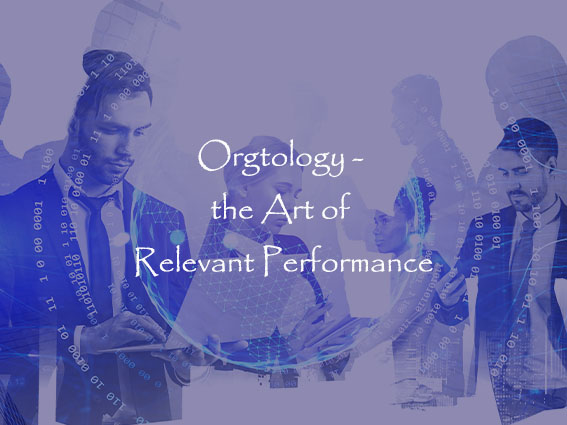EOP is an acronym that we use for Exposure, Opportunities, and Process. In my post "The EOP Analysis – redefining how we understand organisations" I explain EOP. It is an understanding of organisational reality.
There are quite a few ways to do an EOP analysis. This could range from a conversation to in-depth research. Below are some of the methods.

The EOP Analysis – redefining how we understand organisations
Thinking and talking about EOP
EOP adds value to workplace conversation. Managers who think and talk about EOP will grasp what they must do to perform and stay relevant. The risks, opportunities, and processes that encapsulates their work will be clear.
EOP is more than an analysis; it is a management style. To talk and think about it will drive performance and inform strategy. Through EOP our decisions are true, and consequences known. Managers should have EOP on their minds during every minute of any working day.
Workshopping the EOP:
A basic way to facilitate EOP is to draw four blocks on a flip chart or white board. Clockwise, give each block the following heading:
- Dynamic Processes (top left).
- Opportunities (top right).
- Risk Exposure (bottom right).
- Efficient Processes (bottom left).
Participants to an EOP workshop must probe a specific problem, context, strategy, etc. To begin with the EOP a team must have a problem statement or hypothesis.
The next step is to ask relevant questions and to "bullet point" the findings within each section. The sketch below shows which questions one can ask…
To recap, process dynamics do not have clear rules, sequence, outputs, or outcomes. E.g., communication, negotiation, problem solving, conflict resolution, etc. They all pertain to relationships. Process efficiency holds clear rules, sequence, and outputs. E.g., performance assessment, procurement, customer complaints filing, etc.
To do an EOP workshop, one must have a problem statement. Let us assume a problem where a recent survey shows that employees are unhappy. E.g., a climate and culture survey show that 75% of all employees are unhappy. The sketch below shows how we use some of the given questions to grasp this problem. The problem at hand will dictate which questions to use.
From this analysis, we can create an EOP analysis table, as shown below:
| Exposure: | Opportunities: | Processes: |
| * Unhappy
employees.
* Poor performance. * Customer dissatisfaction. |
* Capable
staff. * Happy workforce will induce happy customers * One can fix relationship problems. |
* Establish
process of participative planning and decision-making. * Adjust performance management system to include strategic initiative. * Create effective communication feedback system. |
The EOP analysis gives us useful data to deal with problems. In this case, we can reduce risk and exploit the right opportunities if we:
- Fix the communication, participation, and planning processes; and
- Link strategic initiative to performance assessment.
Orgtologists will further use the "4-Window Map" (4WM) model to work with EOP data. Through the 4WM model we can mould EOP results into an effective solution. I explain the 4WM model in my post; "Using the 4-Window Map (4WM) model to solve business problems".
The EOP questionnaire
To do a companywide EOP analysis, one will need a questionnaire. Below I explain how to develop questions for an EOP analysis.
There are four EOP focus areas. Each of them must collect specific data. When we run a companywide EOP, our questionnaire has about 75-100 questions. The amount of questions will depend on the client needs. They will also either collect quantitative or qualitative data. Below I give sample questions under each of the EOP focus areas. To increase the accuracy of data, one can further break them into several other questions. There is no specific order for the EOP questions. I mostly begin with "Process Efficiency" since it is a familiar area to any employee. You can be creative in how you develop an EOP questionnaire.
Process Efficiency:
1. How able are we to deliver on our purpose?
2. Do we manage our resources in an efficient way?
3. How able are we to manage our customers and stakeholders?
4. How well does our risk management system work?
5. Do our plans to continue with business, if disaster strikes, make sense?
6. Do we have plans to stay relevant?
7. How safe is our work environment?
Process Dynamics:
8. Are our organisational values internalized?
9. Do our leaders demonstrate our values?
10. Do we have the knowledge, skill, and tools to do our work?
11. Do people generally have a positive workplace attitude?
12. s the emotional well-being within our organisation healthy?
13. Do we communicate effectively?
14. How able are we to manage conflict?
Opportunities:
15. What are our PESTLE (political, economic, social, technological, legal, and environmental) opportunities?
16. What are our "Porter Forces" (new entrants, suppliers, substitutes, buying power, and industry rivalry) opportunities?
17. What type of strategy will best for us?
18. Which competitive advantage can we best exploit?
19. What CVP (customer value proposition) will create customer loyalty?
20. Which capabilities do we have that sets us apart from the rest?
21. What can make us more unique?
Risk Exposure:
22. What is our PESTLE risk exposure?
23. What is our "Porter Forces" risk exposure?
24. How strong is our competative environment.
25. How safe is our intelligence?
26. How able are we to continue business if disaster strikes?
27. Does our strategy enable our operational processes?
28. Is our organisation built to last?
The EOP interview
Due to the cost involved, an EOP interview is mostly for executives. This is often a great aid to the EOP questionnaires since it can test its conclusions. With company executives we aim to get high level quantitative information. When we must test questionnaire conclusions, we often use focus groups to save cost. A focus group is a homogeneous employee sample. It is therefore difficult to prescribe specific interview or focus group questions. Below are samples areas around which one can develop questions.
- Past strategic success.
- The structure of the strategy document.
- Business models.
- Process interdependence.
- Core business targets.
- Critical success factors for efficiency and effectiveness.
- Strategic direction and opportunities.
- Application of the 5V Model (setting vision).
- Quantification of strategic programmes (V4 Targets).
- Strategic risks.
- Difficult conversations that employees must have.
The EOP report
The EOP analysis has one goal, which is to produce a quality report. We generate data and then make sense of it through a report. A good EOP report must contain the following information:
- Context and aims of the EOP analysis.
- Method of data collection.
- Summary of EOP findings.
- Method of statistical and qualitative processing.
- Recommendations.
We can do an EOP analysis for many reasons. It is often to define strategic direction. It could also be to test the employee climate, or just to probe the general EOP environment. Whatever the reason for doing an EOP, your report must reflect findings that relate to the purpose of the enquiry.



